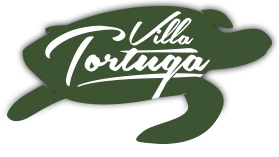In 1821, Central America (Costa Rica included) declared independence from Spain. Thereafter the Central American republics were established. Originally Guanacaste belonged to Nicaragua; however in 1846 (on July 25th) the Annexation of Guanacaste as part of Costa Rica took place. “Guanacastecos” (as the people living in the province are referred to) have always had a deeply rooted sense of independence. At times it appears as though they consider themselves Guanacastecos first and then Costa Rican. This strong sense of identity give the area noticeable distinction from the rest of Costa Rica, and the advanced Spanish speaker will even notice a variance in their Spanish accent.
For generations, the land around Nosara was used mainly for cattle pasture. Large tracts of land were deforested thus greatly diminishing the beauty of the area. However, in the 1970s a community of foreigners came together and established one of the first ex-pat communities in the area and they made reforestation a priority. Today, Nosara is one of the green zones of greatest beauty in all of Costa Rica. Thick rich forest grows in areas that were once razed for the benefit of cattle ranching. Nosara’s “Proyecto Americano” or American Project, which includes lots in the northern end of Playa Guiones, Playa Pelada and some of the surrounding hills, is a wonderful example of responsible planning and development. To a local a large number of homes exist in the area yet, for the first time visitor, they can still feel that they are isolated and surrounded with nothing but a pristine tropical environment.
This permanent Green Zone consists of 22 separate plots of land totaling 77 hectares or about 170 acres disbursed through the Project. The original developers promise of a golf course was never realized, but much of that land is officially protected and under the guardianship of the Nosara Civic Association.
Nosara serves as a great example of planned growth that is the model for development in other areas of Costa Rica. The civic association was established to jealously guard the interests of the people in the zone as well as the environment. As a result Nosara enjoys the cleanest water table in Costa Rica, clean ocean water with no dumping of gray or black water into the streams or beaches (sad to say only a few parts of Costa Rica can boast this claim), regularly scheduled trash collection, and excellent health and educational services for the townspeople.
(“taken from nosara.com”)
 SPECIALS
SPECIALS